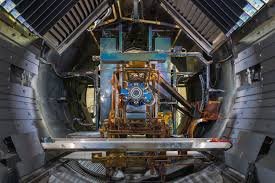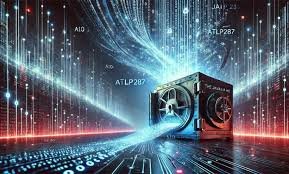Advanced Propulsion SSFX : Future of Efficient
Introduction
The pursuit of new and innovative propulsion technologies is crucial as industries look to reduce emissions, enhance efficiency, and explore new frontiers of speed and power. Advanced Propulsion SSFX is one such breakthrough, promising to transform how we think about transportation. From space exploration to high-speed rail and maritime transport, the SSFX system represents a significant leap forward in propulsion technology. This article will delve into the science behind Advanced Propulsion SFX, its potential applications, and the advantages it offers over traditional propulsion systems.
What is Advanced Propulsion SSFX?
Advanced Propulsion SSFX stands for Superconducting Spaceframe Flux eXchange propulsion, a cutting-edge system that leverages superconductivity to generate high-efficiency thrust using magnetic fields. By integrating superconducting materials, magnetic flux, and spaceframe structures, SSFX can revolutionize transportation systems across multiple domains. This propulsion system is unique because it eliminates many of the limitations associated with traditional engines, particularly combustion-based propulsion systems.
How Does Advanced Propulsion SFX Work?
The key to Advanced Propulsion SFX lies in its ability to manipulate the magnetic properties of superconductors. Superconductors, when cooled to extremely low temperatures, exhibit zero electrical resistance, allowing electrical current to flow without loss of energy. This property enables SSFX systems to generate powerful magnetic fields that can interact with other fields or materials, producing thrust in various environments.
Superconductivity and Magnetic Fields
At the core of SSFX is superconductivity, which occurs when materials are cooled below a certain temperature. In this state, they lose all electrical resistance, allowing for more efficient use of electrical energy. The ability to produce strong, stable magnetic fields in SSFX systems allows them to propel objects with minimal energy loss, improving overall efficiency and reducing environmental impact.
The Role of Spaceframe Technology
Spaceframe technology refers to the structural framework that supports the superconducting components of the SSFX system. The spaceframe is designed to distribute the forces generated by the magnetic fields efficiently while keeping the overall weight of the system low. This feature is especially important for applications in aerospace and maritime transport, where weight reduction is a key factor in optimizing performance.
Advantages of Advanced Propulsion SFX
The Advanced Propulsion SFX system offers a multitude of benefits, ranging from improved energy efficiency to enhanced speed and power capabilities. Below are some of the major advantages that set SSFX apart from traditional propulsion systems.
Increased Efficiency
One of the main advantages of Advanced Propulsion SSFX is its ability to operate with much greater efficiency than conventional propulsion systems. Traditional systems, such as internal combustion engines or jet turbines, waste significant amounts of energy due to friction, heat, and exhaust. In contrast, SSFX systems minimize energy loss, as superconductivity allows for the direct transfer of electrical energy with minimal resistance.
Environmentally Friendly Operation
Another significant benefit of SSFX propulsion is its potential to reduce environmental impact. Traditional propulsion methods contribute heavily to air and noise pollution, while SSFX relies on superconductors and magnetic fields rather than combustion. As a result, SSFX-powered vehicles could significantly reduce emissions, making it an attractive option for industries seeking more sustainable solutions.
Enhanced Speed and Power
SSFX propulsion systems also offer the potential for greater speed and power. By harnessing superconductivity, SSFX can generate more powerful magnetic fields, enabling the system to achieve higher thrust output. This could lead to faster travel times for aerospace applications, as well as improved efficiency in high-speed rail and maritime transport. The ability to generate thrust without relying on fuel combustion also allows SSFX systems to achieve higher velocities while maintaining efficiency.
Lower Maintenance Costs
Traditional propulsion systems often require regular maintenance due to mechanical wear and tear, high temperatures, and fuel consumption. The SSFX system, however, has fewer moving parts and operates at lower temperatures, reducing the need for constant maintenance. As a result, SSFX-powered vehicles may experience fewer breakdowns and longer operational lifespans, leading to lower maintenance costs over time.
Versatility Across Different Environments
Another advantage of Advanced Propulsion SSFX is its versatility. While traditional propulsion systems are often limited to specific environments, SSFX technology can potentially be used in various conditions, including space, air, and water. This versatility opens up exciting new possibilities for transportation, including interplanetary travel, underwater exploration, and high-speed trains.
Applications of Advanced Propulsion SSFX

The potential applications of Advanced Propulsion SFX are vast, ranging from space exploration to the transportation of goods and people across the globe. Below are several areas where SSFX propulsion could make a significant impact.
Aerospace and Space Exploration
One of the most promising applications of SSFX propulsion is in the aerospace industry, particularly in space exploration. Traditional rocket propulsion systems rely on fuel combustion to generate thrust, but SSFX could offer a more efficient alternative. With SSFX propulsion, spacecraft could achieve greater speeds and more efficient use of energy, reducing the need for large amounts of fuel and potentially lowering the cost of space missions.
By using Advanced Propulsion SSFX, spacecraft could travel further into space, faster and more efficiently than current propulsion systems allow. The ability to reduce fuel consumption and achieve higher velocities would be a game-changer for both space agencies and private space companies. This could accelerate our journey to Mars and beyond.
High-Speed Rail Systems
Another area where Advanced Propulsion SFX could make a significant impact is in high-speed rail systems. Countries like Japan and China have already implemented maglev (magnetic levitation) trains, which use magnetic fields to levitate and propel trains at speeds of over 300 miles per hour. However, SSFX could take these systems to the next level by providing even more efficient propulsion, reducing energy consumption and increasing speed. As the cost of superconducting materials decreases, SSFX could become a feasible option for high-speed rail networks worldwide.
Maritime Transport
The shipping industry is another sector where Advanced Propulsion SFX could have a major impact. Ships currently rely on large diesel engines, which are inefficient and environmentally harmful. SSFX propulsion could provide a cleaner, more energy-efficient alternative, allowing ships to operate with little to no emissions. Moreover, SSFX-powered vessels could achieve higher speeds while using less energy, making them more competitive in the global shipping market.
The maritime industry, which is responsible for a significant portion of global greenhouse gas emissions, could greatly benefit from Advanced Propulsion SSFX systems. By adopting SSFX propulsion, shipping companies could reduce their carbon footprints and help meet international emissions reduction goals.
Electric Vehicles (EVs)
While Advanced Propulsion SFX is often associated with aerospace and maritime applications, the technology could also benefit electric vehicles (EVs). Traditional electric cars rely on battery-powered electric motors, but SSFX could enhance the efficiency and power of these systems. By using superconductors to reduce energy loss, EVs could achieve longer ranges and better overall performance.
SSFX propulsion could also reduce the weight of electric vehicles, allowing for more efficient battery use and better handling. As the world transitions to electric vehicles, SSFX could play a key role in making EVs more practical for everyday use.
Challenges and Limitations of Advanced Propulsion SFX
Despite the many benefits of Advanced Propulsion SFX, there are several challenges that must be addressed before it can be widely adopted. One of the main hurdles is the cost and scalability of superconducting materials. Currently, superconductors are expensive to produce and require cooling to extremely low temperatures, which makes the system costly to operate.
Another challenge is integrating SSFX propulsion with existing transportation infrastructure. For example, retrofitting ships, aircraft, or vehicles to use SSFX propulsion would require significant changes to their design and structure. This could be costly and time-consuming, particularly for industries with established technologies.
Finally, regulatory and environmental factors must be considered. As SSFX technology progresses, it will need to undergo rigorous testing and certification to ensure safety and reliability. Additionally, there are concerns about the long-term sustainability of superconducting materials and the potential environmental impact of their production.
The Future of Advanced Propulsion SFX
Despite these challenges, the future of Advanced Propulsion SFX is bright. Research and development in this field are accelerating, and as the technology matures, it is expected that the cost of superconducting materials will decrease, making SSFX more affordable. Moreover, as industries seek more sustainable solutions, SSFX propulsion could become the standard for a wide range of transportation applications.
In the coming years, we may see the first commercial applications of SSFX propulsion, with aerospace, high-speed rail, and maritime industries leading the way. With its ability to enhance efficiency, reduce emissions, and achieve greater speeds, Advanced Propulsion SFX has the potential to shape the future of transportation.
Conclusion
Advanced Propulsion SFX is a groundbreaking technology that has the potential to revolutionize the way we travel and transport goods. By harnessing the power of superconductivity and magnetic fields, SSFX offers numerous advantages over traditional propulsion systems, including increased efficiency, environmental sustainability, and enhanced speed. While there are still challenges to overcome, the future of Advanced Propulsion SSFX looks promising, with the technology poised to make a significant impact across aerospace, high-speed rail, and maritime transport industries. As research and development continue, SSFX could very well be the propulsion system of the future, ushering in a new era of faster, cleaner, and more efficient transportation.







Post Comment